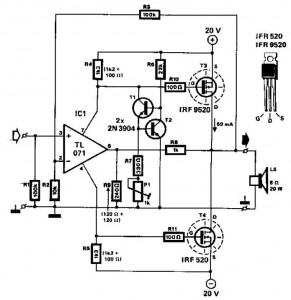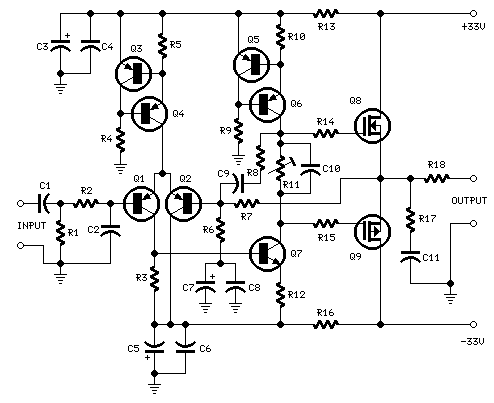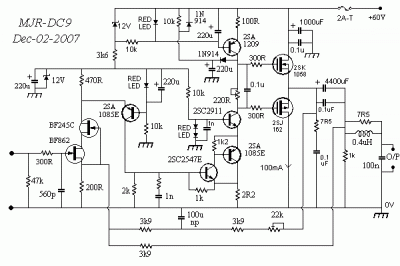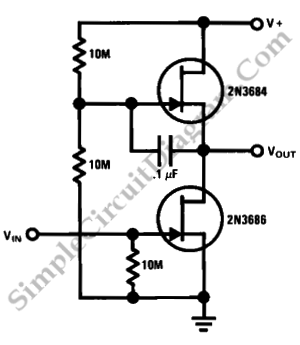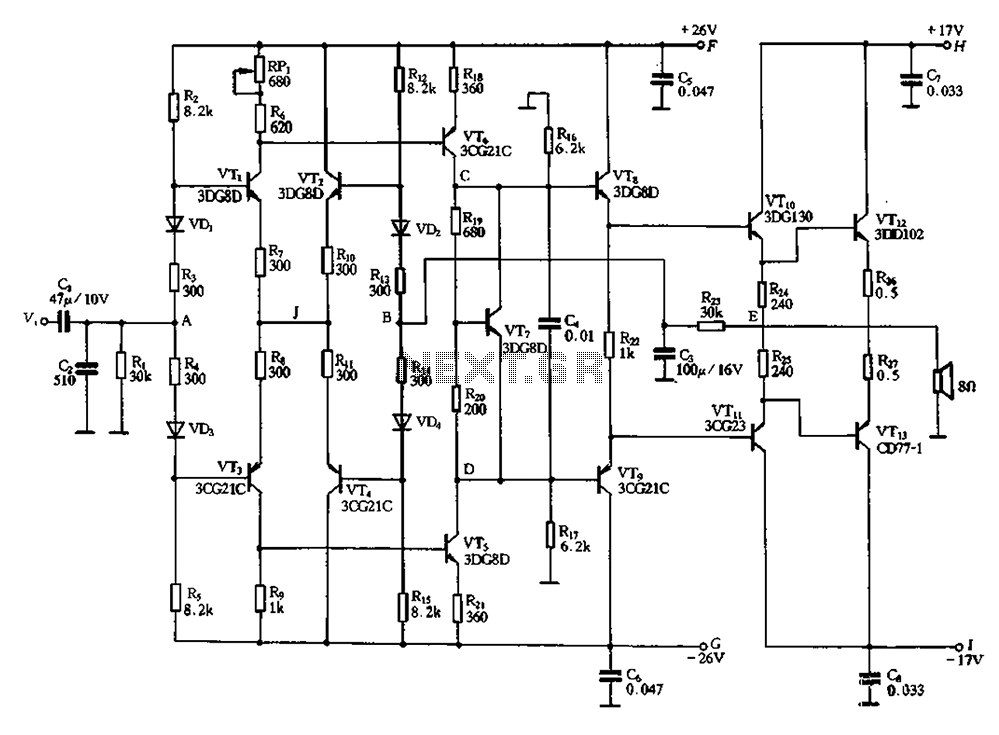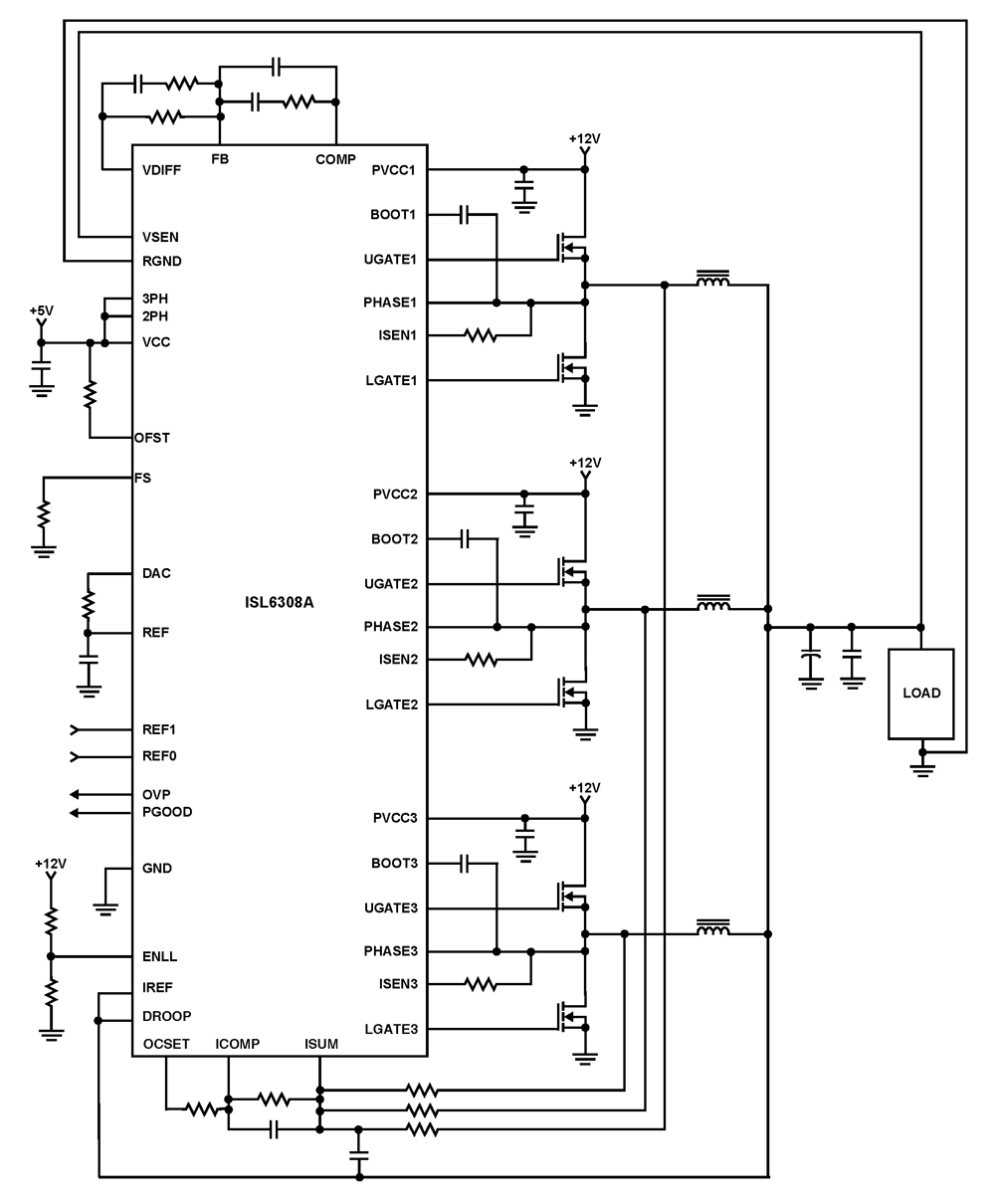
2N2497 Differential FET Voltmeter
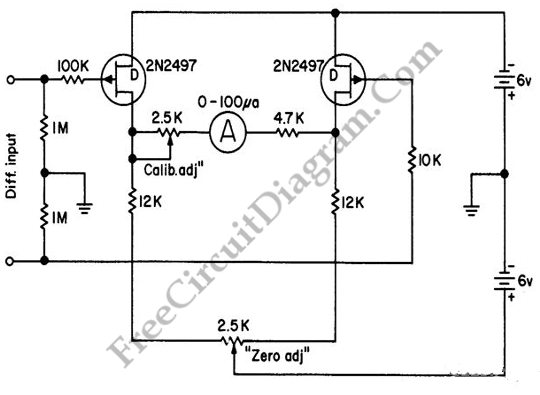
Two single-ended circuits are connected back to back to provide a differential input. This circuit not only features a differential input but also exhibits high impedance, significantly higher than that of an analog ammeter without this circuit. A schematic diagram of the circuit is provided.
The described circuit consists of two single-ended amplifiers arranged in a back-to-back configuration to create a differential input. This arrangement is advantageous for applications requiring high input impedance, which minimizes the loading effect on the signal source. The differential input allows for the rejection of common-mode noise, enhancing the accuracy and reliability of the signal processing.
In this configuration, each single-ended amplifier receives its input from a different source, while the output is taken from the difference between the two signals. This method effectively amplifies the difference between the inputs, which is particularly useful in environments with significant electrical noise or when measuring small signals.
The high impedance characteristic of this circuit is achieved through the use of operational amplifiers (op-amps) or specialized high-impedance buffer circuits. The op-amps are configured in such a way that they present a high resistance to the input signal, allowing for minimal current draw from the signal source. This is critical in preserving the integrity of the signal, especially in sensitive applications such as sensor interfacing or data acquisition systems.
The schematic diagram accompanying the description illustrates the connections and components used in the circuit. It typically includes the op-amps, resistors, and any necessary capacitors for stability and filtering. Proper selection of these components is essential to achieve the desired performance characteristics, including bandwidth, gain, and noise performance.
In conclusion, the back-to-back single-ended circuit configuration provides an effective solution for applications requiring differential input with high impedance, ensuring accurate signal processing and noise rejection.Below is two single ended circuits which connected back to back give differential input. This circuit is not only has differential input feature, but also high impedance, much higher compared with the analog ammeter without this circuit. Here is the schematic diagram of the circuit: We aim to transmit more information by carrying articles.
Please send us an E-mail to wanghuali@hqew. net within 15 days if we are involved in the problems of article content, copyright or other problems. We will delete it soon. 🔗 External reference
The described circuit consists of two single-ended amplifiers arranged in a back-to-back configuration to create a differential input. This arrangement is advantageous for applications requiring high input impedance, which minimizes the loading effect on the signal source. The differential input allows for the rejection of common-mode noise, enhancing the accuracy and reliability of the signal processing.
In this configuration, each single-ended amplifier receives its input from a different source, while the output is taken from the difference between the two signals. This method effectively amplifies the difference between the inputs, which is particularly useful in environments with significant electrical noise or when measuring small signals.
The high impedance characteristic of this circuit is achieved through the use of operational amplifiers (op-amps) or specialized high-impedance buffer circuits. The op-amps are configured in such a way that they present a high resistance to the input signal, allowing for minimal current draw from the signal source. This is critical in preserving the integrity of the signal, especially in sensitive applications such as sensor interfacing or data acquisition systems.
The schematic diagram accompanying the description illustrates the connections and components used in the circuit. It typically includes the op-amps, resistors, and any necessary capacitors for stability and filtering. Proper selection of these components is essential to achieve the desired performance characteristics, including bandwidth, gain, and noise performance.
In conclusion, the back-to-back single-ended circuit configuration provides an effective solution for applications requiring differential input with high impedance, ensuring accurate signal processing and noise rejection.Below is two single ended circuits which connected back to back give differential input. This circuit is not only has differential input feature, but also high impedance, much higher compared with the analog ammeter without this circuit. Here is the schematic diagram of the circuit: We aim to transmit more information by carrying articles.
Please send us an E-mail to wanghuali@hqew. net within 15 days if we are involved in the problems of article content, copyright or other problems. We will delete it soon. 🔗 External reference
Warning: include(partials/cookie-banner.php): Failed to open stream: Permission denied in /var/www/html/nextgr/view-circuit.php on line 713
Warning: include(): Failed opening 'partials/cookie-banner.php' for inclusion (include_path='.:/usr/share/php') in /var/www/html/nextgr/view-circuit.php on line 713
